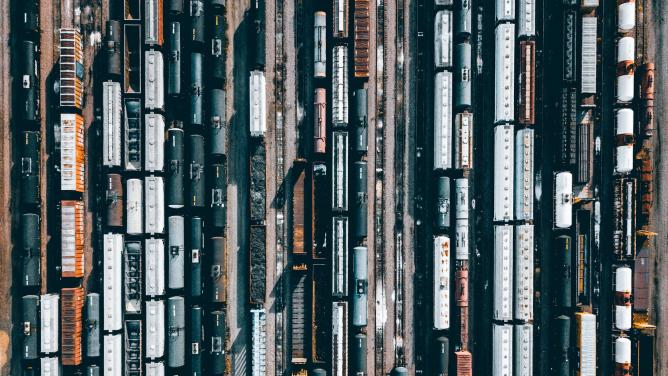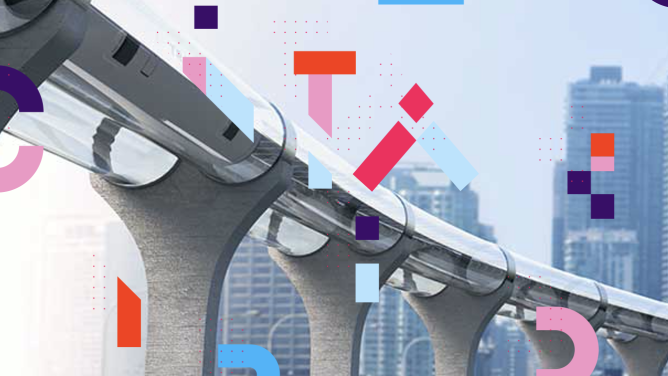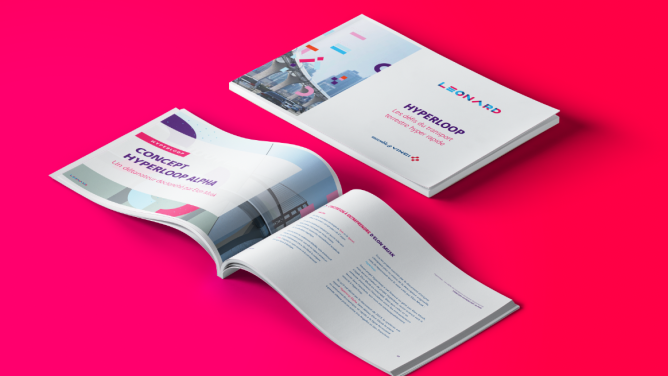The love/hate relationship with speed is a mainstay in modern imaginaries. In 1854, Heinrich Heine once wrote about the train “It is as if the mountains and forests of all countries moved towards Paris. I can smell the scent of German linden trees, and the North Sea is roaring in front of my door.” Meanwhile, Goethe invented the neologism “velociferic” to describe the devilish speed in which people got about. These days, this schizophrenic relationship with speed is embodied in Hyperloop projects – hated by some, lauded by others. On one hand, you’ve got the inefficient and irrational “generalized speed” of a society that ironically wastes time in trying to gain time. While on the other hand, there’s the idea of getting rid of geographic constraints. In this heated debate, Leonard wanted to take stock of the facts by looking at some of today’s ongoing projects, see what stage they’re at and what the future holds.
Lots of Hyperloops, not so much information
Be it Elon Musk’s aura, technological promise or simply quality communications, whatever the reason, Hyperloop projects are on the increase. Every time, the method is the same: a company is created to bring to life the Tesla founder’s “open source” vision. We’re currently witnessing a sort of global race to see who will carry out tests first. Those playing the game include Virgin Hyperloop, who is perhaps the favorite to win. In November 2020 in the Nevada desert, the company test run a passenger-loaded pod in a depressurized tube which reached a speed of 172 km/h. While it’s not so impressive in terms of speed, it is, however, the first step towards demonstrating the concept’s technical viability. Virgin invested $500 million in a research center, the aim being to obtain the first certification by 2025. In The Netherlands, Hardt and Delft Hyperloop are currently building the longest test track in Europe for a budget of €30 million, a third of which comes from public money. In France, Hyperloop TT has also built a test track in Toulouse. And there’s also planned projects to link Dubai with Abu Dhabi in under 12 minutes, Pune with Mumbai in 25 minutes, and San Francisco and Los Angeles in 35 minutes.
With an abundance of initiatives in development, questions concerning standardization and regulations are central. Europe is seeing many partnerships emerge, suggesting collaborations between start-ups. Hardt, Zeleros, Nevomo and TransPod have teamed up as a consortium to accelerate standardization efforts. Meanwhile in the United States, the government is also working on a legal framework for a Hyperloop rollout.
Ultra high speed on ground: what for?
Despite making progress, Hyperloop projects also attract their fair share of criticism. We already looked at the technology from a gadgetbahn perspective, the latter being a neologism for miracle transport solutions that don’t really deliver solutions. While the term is undoubtedly a little overkill, questions concerning Hyperloop’s use and price still endure.
In 2016, leaked documents estimated the cost of a Hyperloop line at $121 million per mile – yet Elon Musk pledged $11.5 million per mile in 2013. Even if engineers successfully manage to cut costs, it seems unlikely that they’ll reach the same passenger capacity as the train. In a letter denouncing a “formidable techno-intellectual scam“, the French expert François Lacôte compared Hyperloop’s maximum speed of 1,000 passengers per hour to that of 20,000 passengers per hour for a high-speed TGV train.
From an environmental point of view, the tech initially promised tunnels fitted with solar panels and capsule ”vacuum” transportation providing better energy efficiency, all powered solely by renewable electricity. Ideally, the device could be self-sufficient. While it’s difficult to verify just how realistic this is, impact studies highlight some positive aspects. For example, Helmut Schmidt University in Hamburg has calculated that 300km of Hyperloop tracks dedicated to freight would prevent 140,000 tons of CO2 emission each year.
However, the issue of infrastructure and land use footprint remain unresolved. By using overhead tubes, less surrounding land space is wasted, “which would not exceed ten meters in width, favoring an installation in line with existing axes,” as Batiactu explains. On the other hand, in order to reach high speeds, linear tracks are required, raising questions about how to cross mountainous land or protected areas.
Finally, just how beneficial is this type of project? Citylab talks of “elite projection” on Musk’s part, who doesn’t take into consideration the “amount” of people to transport in small spaces. While Hyperloop may have the means to transport some privileged people from one city center to another, it doesn’t seem to meet issues concerning overcrowding, or mass transit which paralyzes urban space today.
A big R&D free-for-all?
Ultimately, Hyperloop’s strength seems to lie in its power to attract. Hundreds of engineers are now working to solve the challenge set by Elon Musk. He himself started The Boring Company, whose goal is to drill tunnels more efficiently. And if Hyperloop doesn’t become a reality, Musk has already planned to let his self-driving Tesla run free there. “We’re more focused on an R&D approach. A line won’t be in service for another 20 years, in flat regions in the middle of deserts,” sums up Eric Vidalenc.


